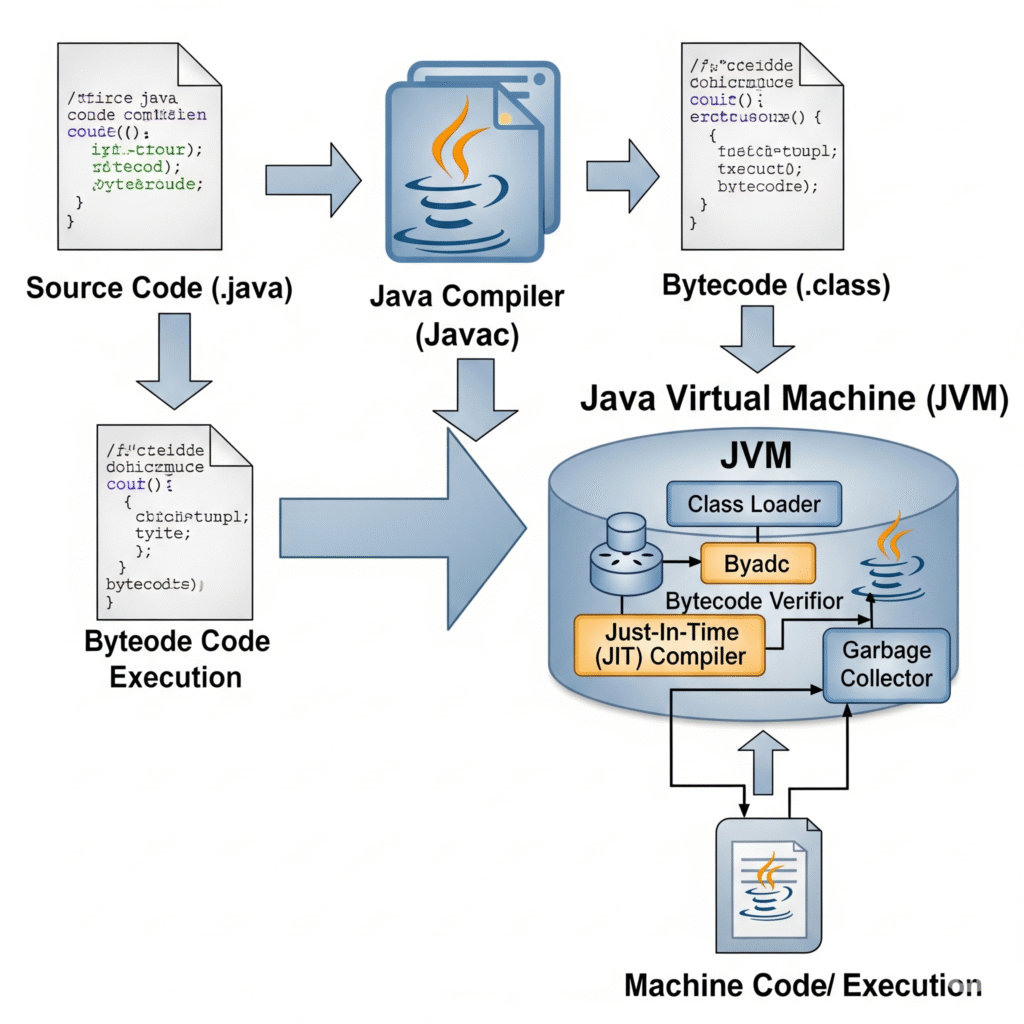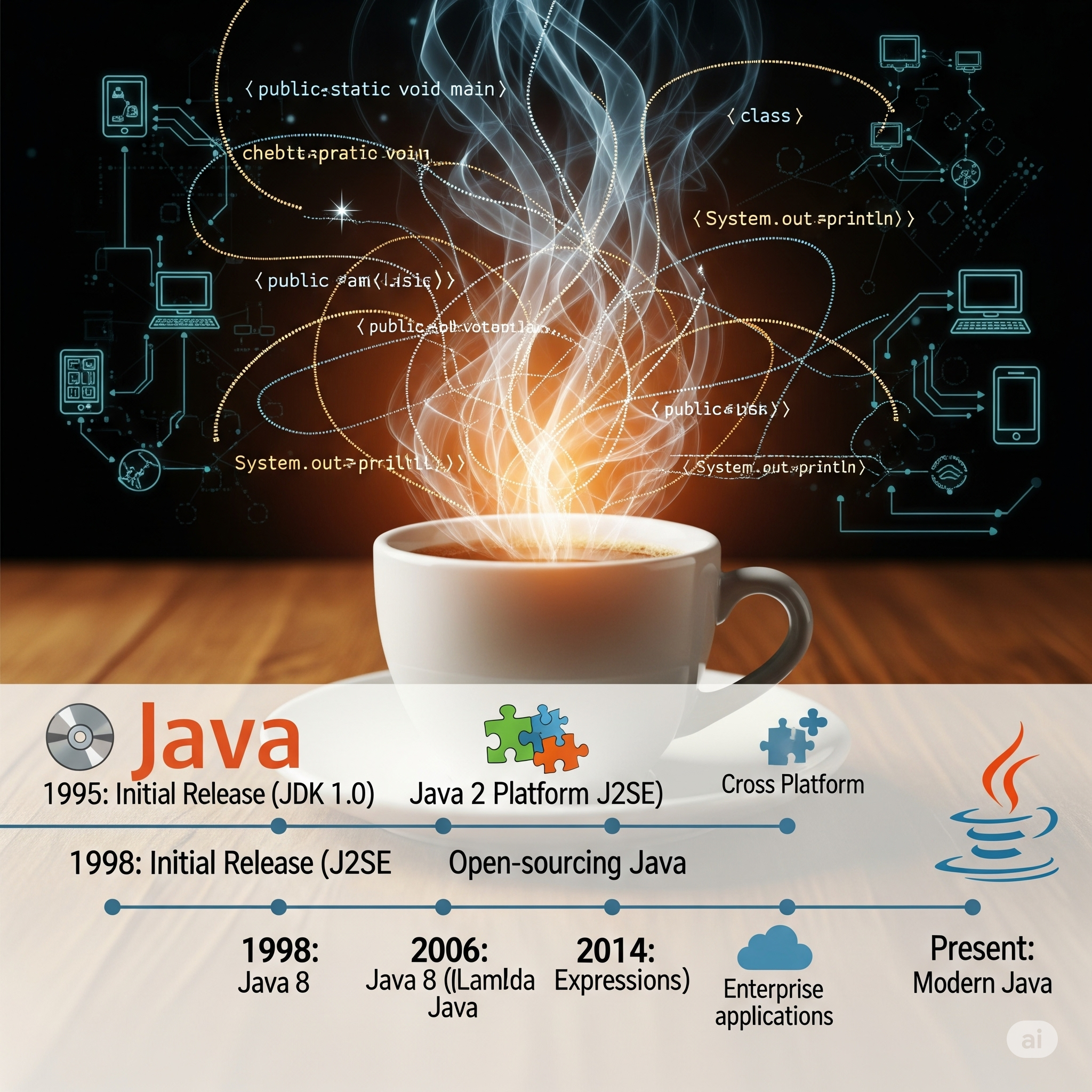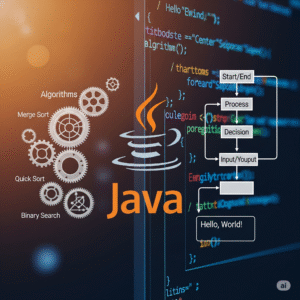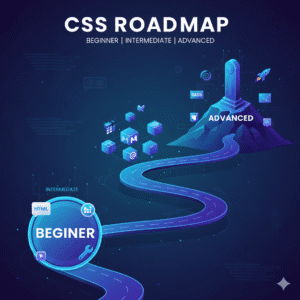Table of Contents
History of Java programming language is more than just dates and versions — it’s a story of innovation, a unique name inspired by coffee, and a design that changed how software runs across platforms. Today’s learning journey took me beyond syntax and coding into its origins, features, and the magic of how Java works under the hood. Here’s what I discovered in simple words.
1. A Brief History of Java
The history of Java programming language begins in 1991 at Sun Microsystems, where a small team of engineers led by James Gosling, along with Mike Sheridan and Patrick Naughton, embarked on a secret initiative called the Green Project.
At the time, the world was moving toward networked, embedded devices — things like interactive televisions, set-top boxes, and smart appliances. The team’s mission was to create a portable, secure, and platform-independent programming language that could work on all kinds of devices without needing to be rewritten for each one.
Initially, they developed a language named Oak — inspired by the oak tree outside Gosling’s office window. Oak’s syntax was influenced by C and C++, but it improved on their drawbacks, offering automatic memory management (garbage collection) and eliminating the dangers of pointer manipulation.
However, by 1994, the team realized their technology had far greater potential than just embedded electronics. The explosion of the internet opened new opportunities for software that could run anywhere. That’s when they shifted their focus to web applications.
In 1995, after a trademark conflict with an existing product named “Oak,” the team renamed their language Java — a nod to their love for coffee (Java coffee from Indonesia). Alongside the name change, Sun Microsystems officially launched Java to the public with the now-famous motto:
“Write Once, Run Anywhere” (WORA) — meaning software written in Java could run on any platform with a Java Virtual Machine (JVM), without needing to be recompiled.
This was revolutionary. Developers could suddenly target multiple operating systems and devices with the same codebase, and Java rapidly became one of the most popular programming languages in the world.
2. Why the Name “Java”?
The name “Java” came from Java coffee, a popular type of coffee from Indonesia. The creators were brainstorming names while sipping coffee, and “Java” stuck because it was short, catchy, and energetic.
Fun fact: This is why Java’s logo has a coffee cup .
3. LTS Versions of Java
In Java’s timeline, certain versions are LTS (Long-Term Support), meaning they are stable and supported for a longer period:
- Java 8 (2014) – Still widely used today.
- Java 11 (2018) – A modern favorite for many enterprises.
- Java 17 (2021) – Current LTS version at the time of writing.
- Java 21 (2023) – Latest LTS release.
4. Features of Java
Here are the standout features that made Java popular:
- Platform Independent – Thanks to the JVM.
- Object-Oriented – Everything revolves around objects and classes.
- Robust and Secure – Strong memory management & security features.
- Multithreaded – Can handle multiple tasks simultaneously.
- Portable – Runs on any device with JVM installed.
5. How Java Works
Java code runs in a special way:
- Write Java code (
.javafile). - Compile it into Bytecode (
.classfile) using the Java compiler. - JVM (Java Virtual Machine) reads the bytecode and converts it into machine-specific code for execution.
This process makes Java platform-independent because bytecode is universal for all systems.

6. Who is Using Java?
Java is everywhere — in:
- Android apps (e.g., Instagram, Spotify).
- Enterprise systems (e.g., banking, insurance).
- Web applications (e.g., LinkedIn, eBay).
- Big data tools like Hadoop.
7. What is Java SE?
Java SE (Standard Edition) is the core platform for Java. It provides:
- The basic libraries.
- The JVM.
- Development tools (like
javaccompiler).
It’s the foundation on which other editions like Java EE and Java ME are built.
8. Main Components of JVM & Bytecode
The Java Virtual Machine has 3 main parts:
- Class Loader – Loads
.classfiles into memory. - Runtime Data Areas – Memory areas for storing variables, objects, methods.
- Execution Engine – Runs the bytecode by converting it into machine code.
Bytecode is a set of instructions understood by the JVM. It’s the reason Java can run on any platform.
Today’s Takeaway:
Java isn’t just a programming language; it’s a global technology backbone that’s been evolving for nearly 30 years. Understanding its history and working makes me appreciate its power even more.
My handwritten notes:
Resources for Java Learning
Official Java SE Specifications
Explore the complete official specifications of Java SE, including syntax rules, JVM details, and class libraries.
Java Virtual Machine Specification
Learn about the JVM architecture, bytecode execution, and how Java achieves platform independence.
Java Platform Overview – Oracle Docs
Browse the complete Java SE API documentation for all packages, classes, and methods.
You May Also Like
If you’re enjoying this beginner-friendly Java series, here are a few of my other helpful posts that you might find useful:
- Java Introduction to Programming: My Exciting Day 1 Journey from Zero to Beginner
My personal first-day experience learning Java — from setting up the environment to writing my very first program. - Java Learning Roadmap 2025 – From Zero to Hero
A step-by-step guide to how I plan to learn Java in 2025, perfect for beginners like me. - Aptitude Tricks for Beginners – Easy Mental Math Techniques
Quick tricks for multiplication, LCM, squaring, and cubes — useful for placement and coding exams. - Types of Nouns in English Grammar – Simple Explanation with Examples
Learn all types of nouns clearly with examples — great for communication skills and competitive exams. - Data Cleaning with Titanic Dataset – A Beginner’s Guide
Learn the complete, beginner-friendly process of cleaning and preparing the Titanic dataset for machine learning, with practical examples and tips.





Pingback: Object Oriented Programming in Java: Simple Guide with Examples for Beginners - Monika's Study Space
Pingback: First Java Program – 7 Key Concepts Every Beginner Must Know - Monika's Study Space
Pingback: How to Install VS Code for Java and Create Your First Java Program (Step-by-Step Guide) - Monika's Study Space
Pingback: Full Stack Developer Roadmap: Zero to Job Ready (6–8 Months Plan) - Monika's Study Space
Pingback: Git and GitHub Explained: Simple Guide for Beginners - Monika's Study Space
Pingback: MERN Stack: A Beginner’s Guide to Web Development and Internet Fundamentals - Monika's Study Space
Pingback: Install Eclipse IDE for Java: Complete Step-by-Step Guide for Beginners - Monika's Study Space
Pingback: IntelliJ IDEA Installation Guide: Easy and Complete Setup for a Smooth Coding Experience - Monika's Study Space